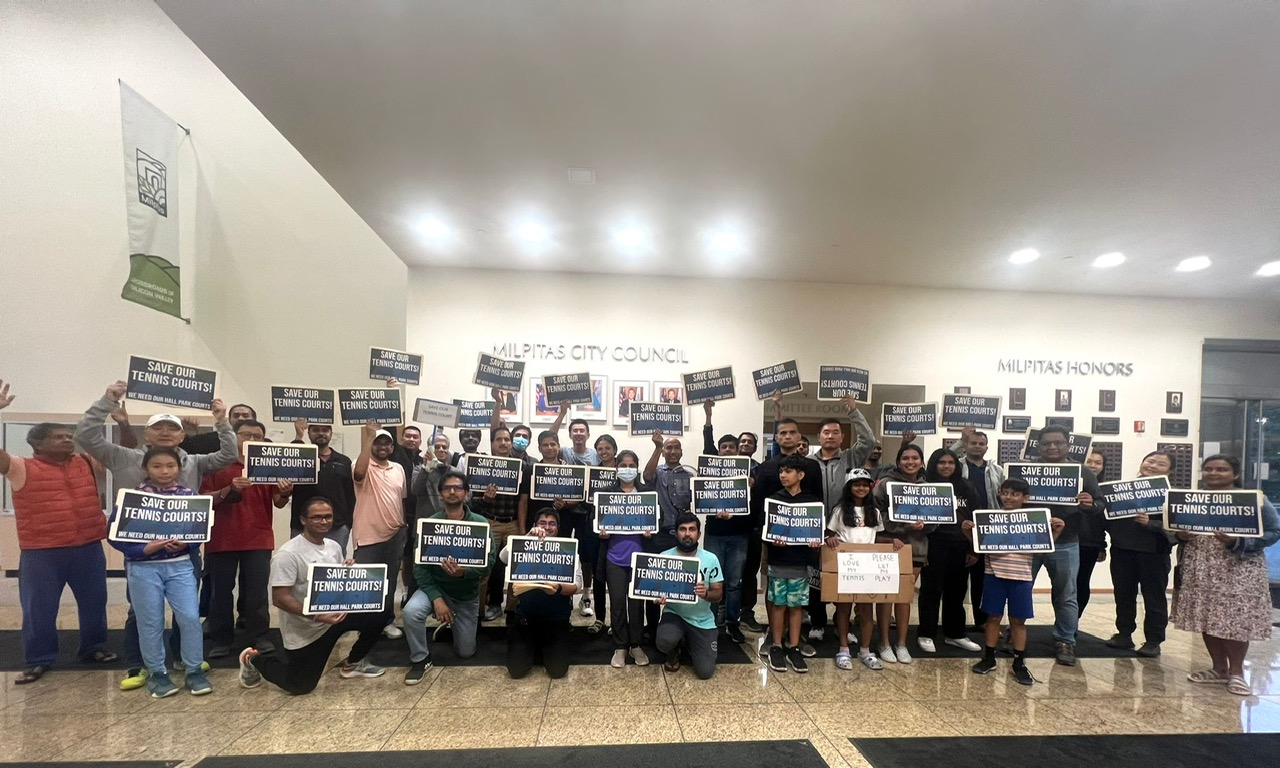
The genesis of the conflict between Tennis and Pickleball at Hall Memorial Park centers on one indisputable premise – the pilot program conducted by the City of Milpitas was deployed with no due process, no prior notice to nearby residents to gather public input, and conducted in bad faith. There were no clear criteria used to define adequate usage at Hall Memorial before and after the study, let alone clear standards of low usage at the Tennis courts. It is absurd to expect any park activity will utilize 100% of all park resources. If proper notices were sent, no members of the local tennis community would have ever agreed to this preposterous experiment.
The Tennis community accommodated Pickleball players, coexisted as good neighbors, and suffered in silence. The Pickleball community has shown no reciprocity in kind. Initially, the pilot mandated one Tennis court for dual use of both activities, with priority hours for Pickleball. That promise quickly ended when Tennis players encountered indignant Pickleball players refusing to share the dual-use Tennis court, and the city was indifferent to those complaints and persisted. Even worse, Pickleball players further violated the initial pilot agreement by playing on the two remaining two tennis courts unmarked with Pickleball lines, encroaching upon tennis players despite clear exclusive spaces for both activities.
Ostensibly, the pilot has been nothing short of a disaster for Tennis players. The biggest challenge for both activities to coexist at Hall is the length of each game and wait times, as scoring in both games shares no similarities. In Tennis, most public park facilities allow an hour to accommodate up to two sets of play while others are waiting. In Pickleball, playing two games typically lasts no more than 20 minutes. Pickleball inherently is a drop-in style game with short gamespans. Yet, the Pickleball community took no adequate steps to mitigate wait times, instead advocating the indiscriminate removal of Tennis courts in favor of their trendy pastime.
Gradually, the Tennis players stop coming to Hall, reinforcing the false Pickleball narrative alleging Tennis courts are underutilized. The forced displacement of Tennis players from Hall means two Tennis courts are permanently lost to nearby residents, and that’s on top of other issues attributed to Pickleball such as excessive noise, lack of street parking, overflowing trash on Pickleball courts, vandalized restrooms, etc. The residential neighbors who partake in neither Tennis nor Pickleball have also suffered in silence, for fear that their complaints would be met with public reprisals and private retaliations from unruly Pickleball fanatics.
Pickleball has not done nearly enough to invest in public infrastructure or contribute any tax dollars to justify their existence in Milpitas, or anywhere else, for that matter. Tennis has continuously prioritized future generations by creating pathways for kids as young as 5 and made it an education priority in school curriculum. These are the lasting hard data that truly matters, not the instant gratification Pickleball players are seeking at Hall. Their activity lacks leadership and has no central organization to issue clear guidance, other than to invade and outright steal shared resources for their own enjoyment. There is no amount of current demand for Pickleball that intrinsically entitles their activity to cut in front of other recreational priorities and engage in unfettered mob rule, particularly when they deliberately displace young children and families from enjoying park facilities.
The reality is public parks with Tennis courts are not intended for Pickleball, and occupying Tennis courts makes it a bad experience for both activities. Existing Tennis courts were incorporated into residential areas gradually over time, built over several decades through public tax dollars to augment the continuity of the neighborhood.
In the first 25 years of the game’s existence, it achieved Olympic sport status and first played at the 1896 Olympics. The United States Tennis Association, the national governing body for Tennis for over 140 years, frequently awards grant fundings to cities and municipalities, helping build new facilities and park renovation projects. Moreover, Tennis is a game that truly reaches people from all walks of life; the sport has sent aspiring kids to colleges on athletic scholarships, uplifted adults out of impoverished economic circumstances, advocated for gender and racial equality, and that’s before counting the numerous professional Tennis champions who trained in public parks in their path to greatness. In more ways than one, the Tennis community has repeatedly taken the high road to be the proverbial mature adult in the room, especially when compared to self-indulgent and irascible Pickleball players when they don’t get everything their way.
